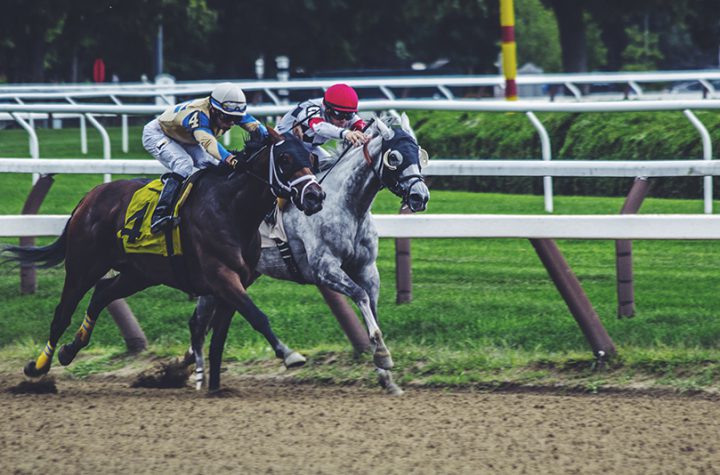
“What’s up, young buck?”
That’s what Kobe Bryant said when I started coming around the Lakers as a cub reporter for the Los Angeles Times. Back then, in 2007, the Clippers were my main priority, but as they stumbled and the Lakers surged, the newspaper often wanted more people to orbit Hollywood’s team.
Others warned that Kobe could be gracious or grumpy depending on the day, moment or news cycle. I only noticed one side in our interactionsaccommodating and introspective. His nickname for me stuck when I soon moved coasts and started working for the New York Times. I never asked out of fear that it would cross some imaginary journalistic line, but I think he had some recognition for what I was trying to dobreak through as a young black man in an industry dominated by older, white men.
He routinely entertained an extra question or two on the side. He chuckled when I told him that I could always count on him to bring me home to California to cover the Lakers during their long playoff runs. “You picked the wrong game, young buck,” he said when I told him that my future wife offered to take me to a game at Staples Center some 14 years ago to celebrate my birthday. The Clippers hosted the Warriors in the afternoon. The Lakers, though, were playing Toronto that evening. As Kobe noted, I definitely picked the wrong gameone which saw him drop 81 points. He told me about spots to visit along the Amalfi Coast when I said we planned to honeymoon in Italy.
One of my favorite moments covering the NBA arrived in the 2009 season when Kobe dropped 61 points at Madison Square Garden. The Knicks still positioned reporters near the baseline, and I soaked in watching a master at work. His best athletic days had already departed, but he scored half of those points just from being the smartest guy on the court. He probed angles. He clung tight to screeners. He used his jab step to make a hapless defender teeter before draining a jumper in his face.
After the Lakers dropped the Orlando Magic in the Finals that season, I spotted Kobe coming down the corridors of the old Amway Arena. He embraced me. “We did it,” he said, grinning from ear to ear. It’s one of the only times I’ve truly realized how much pain, passion and work athletes truly endure to reach the top of their professions. He stood at the peak of the sport after losing to the Celtics in the Finals a season earlier. He personified pure, unfiltered elation in that moment. He probably would’ve offered anyone a hug. I cautiously looked around, hoping that no one else clocked the moment. I didn’t want to be thought of as biased.
That insecurity stemmed from the fact that I wasn’t. I couldn’t be. Not with Kobe. I wanted him to win. I rooted for him to win. I cherished every interaction. Impartiality with your heroes doesn’t mix.
A couple of years later, I started reporting a book on the group of remarkable players who jumped straight to the NBA from high school. Kobe’s leap had long fascinated me. I never talked to him specifically for the book. I figured that one day, he would pen one of the best autobiographies written. At the time, I mostly wanted to talk to those around him during those formative years. Their observations, presented here, reveal much of what made Kobe who he was, as we all grapple with his death, as well as that of his 13-year-old daughter, Gianna, and seven others in a helicopter crash near Los Angeles on Sunday.
People of my age, especially fans who grew up in Southern California, are a generation of Kobe believers. Magic Johnson exists, for me, in grainy images, a no-look pass here, a behind-the-back pass there. He was royalty, but I never lived through his prime. I knew he had never struggled while transforming the Lakers into Showtime. He won a championship his rookie season. I revered Michael Jordan. His dominance coincided with my becoming a lifelong devotee to this game. But he played half a country away, and I had missed his trial-and-error period, the years he spent getting knocked down by Detroit.
We saw it all with Kobe. He arrived in Los Angeles in 1996 at the age of 17. I was just entering middle school and was awestruck at how someone just a few years older than me could compete in an often brutal game with players routinely a decade older than him.
A dozen teams had to pass on drafting Kobeand a 13th team, the Charlotte Hornets, had to trade himin order for him to wind up a Laker. You can’t tell me that the way it happened, with all those twists and turns that allowed for his passage to Los Angeles, was anything but fate, even if Kobe and his agent at the time, Arn Tellem, deftly maneuvered for it to happen.
“I was at that draft, and I always thought a great trivia question was going to be, who were the 12 players that were taken ahead of this future Hall of Famer?” asked Gregg Downer, Bryant’s coach at Lower Merion High School in Pennsylvania. “That is a good trivia question today. Some of those names are, after the way it panned out, laughable.”
It was a different NBA. If Magic made the league popular domestically and Jordan expanded it globally, Bryant ushered it into modernity. Scouting wasn’t anywhere near what it is today. Kobe was the son of an NBA player, Joe “Jellybean” Bryant, and as a high schooler, he often got buckets on members of the Philadelphia 76ers during open runs. But back then, guards just didn’t make the leap from high school to the NBA. Practically no one did.
Only a year earlier, Kevin Garnett had reopened the dormant floodgates. One could make a case for Garnett. His grades had been scrutinized. He was conscious that people would make money off his name had he gone to college, and he already stood damn near 7 feet tall.
Steve Nash greets Kobe Bryant during the 1996 NBA draft.Steve Freeman/Getty Images
Bryant? He could’ve gone to the school of his choosing. He didn’t make any college visits, even though his father was an assistant coach at La Salle at the time. He just wanted to prove that he could beat everyone’s ass on the court, even at a precocious age.
“I’m not sure there’s ever been a player, maybe with the exception of Jordan, that has the internal confidence that Kobe has,” Downer said. “He was chomping at the bit to play against [Charles] Barkley, to play against Patrick Ewing, to play against Jordan before he retired. I don’t think Kobe really listened to the Kevin Garnetts of the world or was necessarily watching stuff like that. He has such an unwavering confidence that I believe he would’ve done it regardless of what Garnett did.”
Teams knew he would be special, even if they couldn’t take a chance on waiting for him to be great. “Kobe … has been the best workout I’ve ever seen,” said Danny Ainge, who coached the Suns in 1996. Phoenix drafted two slots behind the Hornets that year and landed Steve Nash.
“Every candidate I ever tried, every draft that I was involved in, we used this one particular drill,” said Bill Fitch, then the Clippers coach. “And he did some things so well, that physically he had it. You were just going to have to wait for him to grow up.” The Clippers chose not to at the time, selecting Lorenzen Wright out of Memphis six picks before Bryant.
Jerry West, then the GM of the Lakers, didn’t have the same concerns.
“To watch him work out, you saw the incredible skills that he had for a young kid,” West said. “I think the one thing that we all saw was that he had an immense desire to compete. I mean, he just didn’t want to stop competing, and in an hour workout, it was something to see. When he was done, he wanted to keep going.”
I knew it would take time for Kobe to make a mark. The Lakers already had a capable 2-guard in Eddie Jones. Most of the excitement around the franchise that summer swelled around the Lakers’ trade for Shaquille O’Neal from Orlando. It felt like another era of Lakers dominance was upon us. Kobe didn’t want to wait for his time. “You have a chance to be great, but you will not be able to be a starter on the team until you knock out a starter,” Del Harris, his first NBA coach, told him. “You will not be given the decision on a draw.”
“He understood and, of course, believed he could deliver the knockout punch from the start,” Harris recalled. “But it was not as easy as he expected. Still, he worked hard and never doubted.”
Bryant started earning those minutes as the season progressed. “He never paid attention to any outside activities that I could tell,” Harris said. “He never went out. Of course, he was only 18 and 19. On the airplane, he never had any particular funno cards, no video games. He was always looking at basketball things on his computer. In those days, we did not have the DVDs of games to take with us right after the game, no iPads, etc. But he had plenty of DVDs from our earlier games, or of the next team or of Jordan. He was a total student of the game.”
The Lakers advanced to the Western Conference semifinals against the Utah Jazz his rookie season, and with Byron Scott injured, he found himself in a leading role in Game 5.
We watched Kobe fail. He missed a shot that would have won the game near the end of regulation, and the Lakers’ season ended in an overtime loss with one Bryant air ball after another.
“I gambled that Kobe would be able to get open easier, and the main thing was to get a good shot in a short period of time,” Harris said of earmarking Bryant for the play. “And exactly what went through my mind was this: Hit or miss, we win or tie, but Kobe will know his coach had confidence in him to give him that shot in his rookie year. Either way, he will gain from it. He got the ball at the right elbow area and rattled the jumper in and out from 17 feet.”
Bryant desperately tried to still claim the game as his own, heaving air ball after air ball. It wasn’t the misses that struck those around him, but his unwavering willingness to not be afraid of the moment.
Bryant’s shooting miscues in the playoffs during his rookie year didn’t lessen his willingness to embrace crucial moments the rest of his career.Andrew D. Bernstein/Getty Images
“It would be impossible for me to describe the look on a face, but you know the look of somebody that has it,” said Kurt Rambis, then an assistant coach for the Lakers. “It’s fear. It’s doubt. It’s hesitation. It’s they’re uncomfortable. They don’t believe in themselves. You can just kind of see that in a person when they’re going to the free-throw line in a difficult situation or they’ve missed the front end of two free throws or sitting on the bench. It’s just very clear to me with that look that they just don’t believe. You never saw that in Kobe. It was almost like indifference. It was like, yeah, fuck it. You just knew it wasn’t going to bother him. You just knew that.”
Indeed, Kobe learned from that experience, drew upon it to will himself into becoming his generation’s greatest basketball player. Phil Jackson arrived, and in time it was clear what Bryant had become, claiming three championships while pairing with Shaq.
Though he didn’t spark the preps-to-pros era, Bryant’s success fueled it, helping convince Tracy McGrady to follow him into the league from high school a year later, or Darius Miles to do so in 2000, or LeBron James in 2003. The movement brought more misses than hits, but with every win Bryant engineered, teams grew increasingly anxious to not want to miss out on the next Kobe.
Kobe, though, was different. We watched him mature and thrive. We watched him struggle through dark days. And yes, he was a flawed human whose legacy is complicated.
But as a player, he was an unconquering, unflinching superstar.
With the end of his NBA career, though, questions arose about how he would transform himself after spending more than half his life in one jersey for one team, constantly pouring himself into perfecting his craft.
“No matter who it is, when they’re the best at what they do and they’re obsessed with what they do, it almost takes over their personality to where they can’t think about anything else, they don’t want to do anything else,” said Rob Schwartz, one of Bryant’s high school teammates. “I think it was just in his makeup. I do. I think it’s just the way he is. He kind of sort of figured out where he was gonna go and what he had to do, and it was almost like it was all he thought about. His dad playing professional basketball, you have those competitive genes in you. But this was like a level beyond being competitive. I really put it in the category of obsession. I think he was just obsessed with being the best.”
Bryant had prepared for his post-basketball life just as passionately as he had for his career. He had already won an Oscar for his animated short Dear Basketball. You saw the joy he had in being around his daughters and seeing the game through Gianna’s eyes.
We last talked as the 10-year anniversary of the 2008 Olympics came around. Listening to the interview now, I sound nervousawestruck in talking to a hero. For the first time, I hoped that I didn’t disguise my impartiality as well as I thought I had. I commented to him that at those Beijing Olympics, it seemed like his steel exterior had cracked, that some of his NBA players had finally gotten to know him a little better, beyond just being an ultimate competitor.
He agreed, relaying that the Olympic experience of living in the same quarters and eating and training with the rest of the Redeem Team allowed him time to spend with his teammates.
“I have such a narrow focus,” he said. “As you can see, I didn’t have much time to socialize at all. When I wasn’t training, I was writing and I was studying the art of writing, of filmmaking. My days were booked. It wasn’t that I went out of my way not to be social. It was just that I was busy preparing for what I’m doing now.”
A genuine love for basketball and desire to propel themselves ultimately separated the bulk of those who successfully made the transition from high school to the NBA. Kobe spent his life painstakingly and precisely extracting each strain of potential from his talents. The game coursed through his veins. His father and maternal uncle played in the NBA. Nature and nurture resulted in one beautiful, generational gift to basketball.
He had so much more to offer.
Kobe is the last person we ever expected to mourn over lost potential.
Jonathan Abrams is a senior writer for B/R Mag. A former staff writer at Grantland and sports reporter at the New York Times and Los Angeles Times, Abrams is also the bestselling author of All the Pieces Matter: The Inside Story of The Wireavailable right here, right now. Follow him on Twitter, @jpdabrams.




More Stories
The BMC has banned fire crackers in all public and private places within the city limits.
Apple has cut off major supplier Pegatron from new contracts following the reveal of student labor violations. Pegatron is one of Apple’s biggest supply chain partners, manufacturing various products including some of the newest iPhone 12 models.